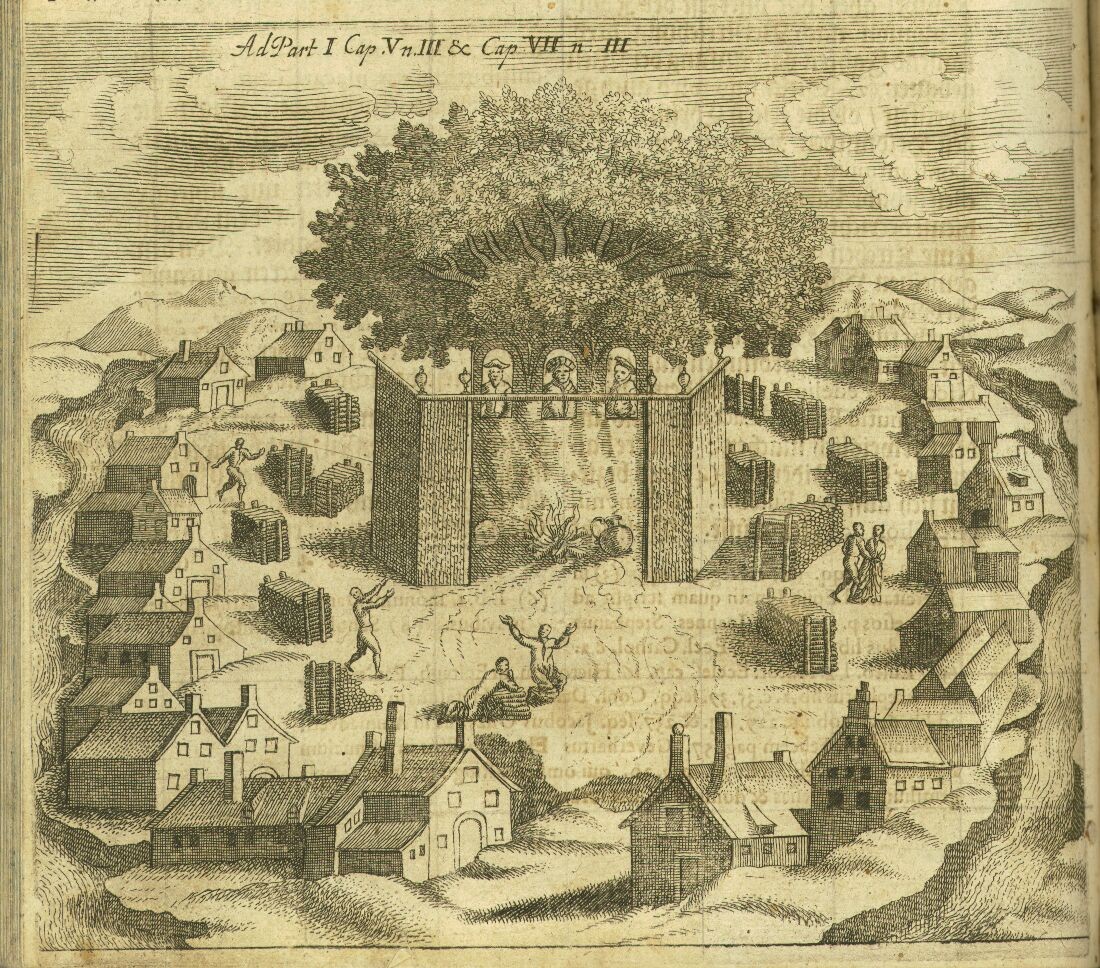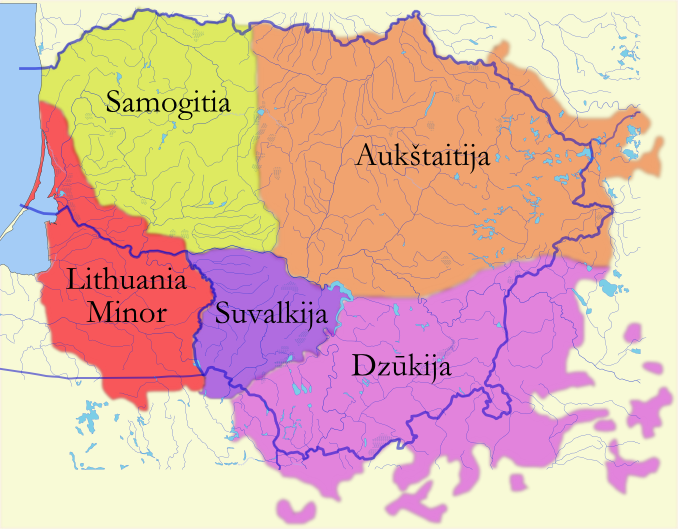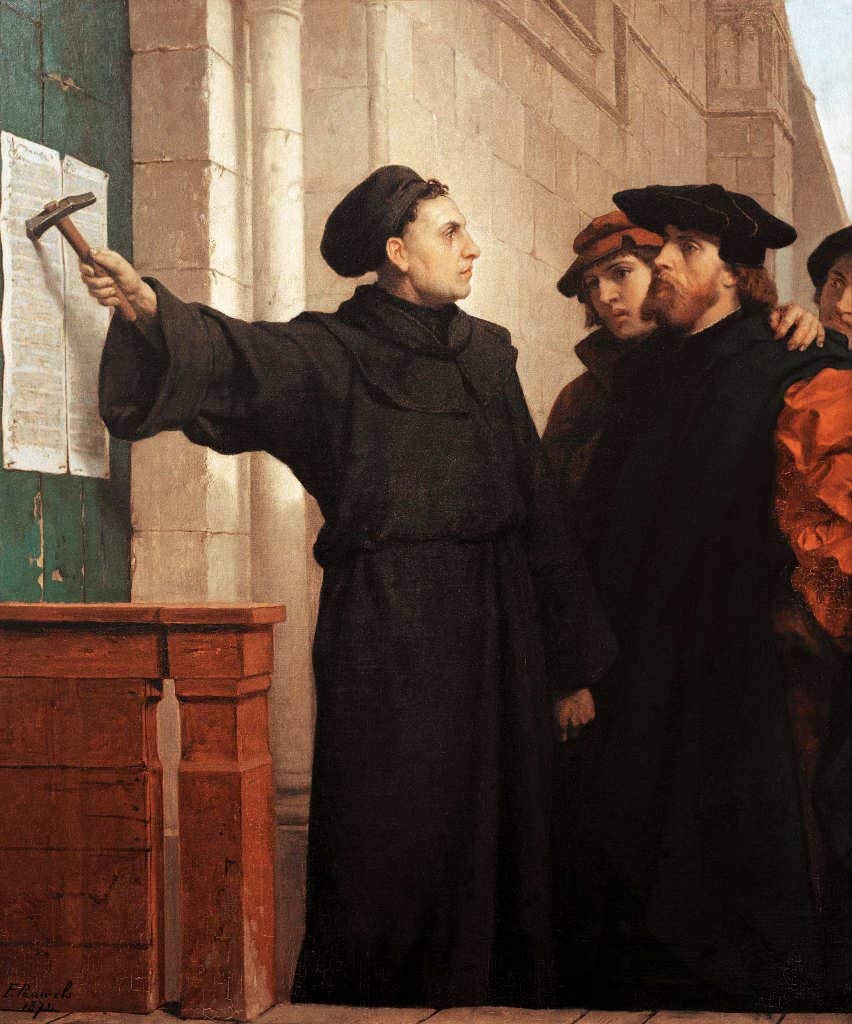|
Prussian Mythology
The Prussian mythology was a polytheistic religion of the Old Prussians, indigenous peoples of Prussia before the Prussian Crusade waged by the Teutonic Knights. It was closely related to other Baltic faiths, the Lithuanian and Latvian mythologies. Its myths and legends did not survive as Prussians became Germanized and their culture went extinct in the early 18th century. Fragmentary information on gods and rituals can be found in various medieval chronicles, but most of them are unreliable. No sources document pagan religion before the forced Christianization in the 13th century. Most of what is known about Prussian religion is obtained from dubious 16th-century sources ('' Sudovian Book'' and Simon Grunau). Historical background and sources The Teutonic Order, a crusading military order, began the Prussian Crusade in the 1220s. Their goal was to conquer and convert pagan Prussians to Christianity. The Knights built log and stone fortresses, which proved to be impregnable ... [...More Info...] [...Related Items...] OR: [Wikipedia] [Google] [Baidu] |
Lithuania Minor
Lithuania Minor (; ; ) or Prussian Lithuania (; ; ) is one of five ethnographic regions of Lithuania. It is a historical region of Prussia, where Prussian Lithuanians (or Lietuvininkai) lived, now located in Lithuania and the Kaliningrad Oblast of Russia. Lithuania Minor encompassed the northeastern part of the region and got its name from the territory's substantial Lithuanian-speaking population. Prior to the invasion of the Teutonic Knights in the 13th century, the main part of the territory later known as Lithuania Minor was inhabited by the tribes of Skalvians and Nadruvians. The land depopulated during the incessant war between Lithuania and the Teutonic Order. The war ended with the Treaty of Melno and the land was repopulated by Lithuanian newcomers, returning refugees, and the remaining indigenous Baltic peoples; the term Lithuania Minor appeared for the first time between 1517 and 1526. With the exception of the Klaipėda Region, which became a mandated territo ... [...More Info...] [...Related Items...] OR: [Wikipedia] [Google] [Baidu] |
Romuva (temple)
Romuva or Romowe (also known as Rickoyoto in the writings of Simon Grunau) was an alleged pagan place of worship (a temple or a sacred area) in the western part of Sambia, one of the regions of pagan Prussia. In contemporary sources the temple is mentioned only once, by Peter von Dusburg in 1326. According to his account, Kriwe-Kriwajto, the chief priest or "pagan pope", lived at Romuva and ruled over the religion of all the Balts. According to Simon Grunau, the temple was central to Prussian mythology. Even though there are considerable doubts whether such a place actually existed, the Lithuanian neo-pagan movement '' Romuva'' borrowed its name from the temple. Historical accounts According to Peter von Dusburg, writing in 1326, the name ''Romuva'' is derived from the word Rome. He describes the Kriwe as a powerful priest who was held in high regard by the Prussians, Lithuanians, and Balts of Livonia. His messengers were recognized by a certain rod or other insignia. He gu ... [...More Info...] [...Related Items...] OR: [Wikipedia] [Google] [Baidu] |
Widewuto
Widewuto or Videvutis (also ''Viduutus'', ''Vidvutus'', ''Witowudi'', ''Waidewut'', ''Vaidevutis'') was a legendary king of the Prussian mythology, pagan Baltic Prussians who ruled along with his elder brother, the high priest (''Kriwe-Kriwajto'') Bruteno in the 6th century AD. They are known from writings of 16th-century chroniclers , Simon Grunau, and Lucas David. Though the legend lacks historical credibility, it became popular with medieval historians. It is unclear whether the legend was authentically Prussian (i.e. recorded from Prussian mythology) or was created by Grunau (possibly inspired by Biblical Moses and Aaron), though Lithuanian researchers tend to support its authenticity. Names Widewuto's name is found in literature in different forms: Veijdenutus, Vydevutis, Vidowuto, Viduutus, Waidewut, Wejdewut, Wenedut, Widewuto, Widewutte, Widiwutus, Wydowudo, Wydowudus, Widowuto, Wydowuto, Widowutus, Witoud, Witoudo, Witouito, Witowudus, Witowuto, Wotowudo, Vaidevutis (moder ... [...More Info...] [...Related Items...] OR: [Wikipedia] [Google] [Baidu] |
Synod
A synod () is a council of a Christian denomination, usually convened to decide an issue of doctrine, administration or application. The word '' synod'' comes from the Ancient Greek () ; the term is analogous with the Latin word . Originally, synods were meetings of bishops, and the word is still used in that sense in Catholicism, Oriental Orthodoxy and Eastern Orthodoxy. In modern usage, the word often refers to the governing body of a particular church, whether its members are meeting or not. It is also sometimes used to refer to a church that is governed by a synod. Sometimes the phrase "general synod" or "general council" refers to an ecumenical council. The word ''synod'' also refers to the standing council of high-ranking bishops governing some of the autocephalous Eastern Orthodox and Oriental Orthodox churches. Similarly, the day-to-day governance of patriarchal and major archiepiscopal Eastern Catholic Churches is entrusted to a permanent synod. Usages in diffe ... [...More Info...] [...Related Items...] OR: [Wikipedia] [Google] [Baidu] |
Wilhelm Mannhardt
Wilhelm Mannhardt (March 26, 1831, Friedrichstadt – December 25, 1880, Danzig) was a German mythologist and folklorist. He is known for his work on Germanic mythology Germanic mythology consists of the body of myths native to the Germanic peoples, including Norse mythology, Anglo-Saxon paganism#Mythology, Anglo-Saxon mythology, and Continental Germanic mythology. It was a key element of Germanic paganism. O ..., on Baltic mythology, and other pre-Christian European pantheons; and for his championing of the solar theory, namely in the early years of his career, under the influence of Jakob Grimm. Later on, Mannhardt focused more on vegetation spirits from an evolutionist point of view, namely the primitive tree cult and its later developments.Rosa, Frederico Delgado, 2018« Avant Le Rameau d’Or : biographie de Wilhelm Mannhardt, précurseur oublié de James Frazer »in Bérose, Encyclopédie en ligne sur l’histoire de l’anthropologie et des savoirs ethnographiques ... [...More Info...] [...Related Items...] OR: [Wikipedia] [Google] [Baidu] |
Duchy Of Prussia
The Duchy of Prussia (, , ) or Ducal Prussia (; ) was a duchy in the region of Prussia established as a result of secularization of the Monastic Prussia, the territory that remained under the control of the State of the Teutonic Order until the Protestant Reformation in 1525. Overview The duchy became the first Protestant state when Albert, Duke of Prussia formally adopted Lutheranism in 1525. It was inhabited by a German, Polish (mainly in Masuria), and Lithuanian-speaking (mainly in Lithuania Minor) population. In 1525, during the Protestant Reformation, in accordance to the Treaty of Kraków, the Grand Master of the Teutonic Knights, Albert, secularized the order's prevailing Prussian territory (the Monastic Prussia), becoming Albert, Duke of Prussia. As the region had been a part of the Kingdom of Poland since the Second Peace of Thorn (1466), King of Poland Sigismund I the Old, as its suzerain, granted the territory as a hereditary fief of Poland to Duke Al ... [...More Info...] [...Related Items...] OR: [Wikipedia] [Google] [Baidu] |
Monastic State Of The Teutonic Knights
The State of the Teutonic Order () was a theocratic state located along the southeastern shore of the Baltic Sea in northern Europe. It was formed by the knights of the Teutonic Order during the early 13th century Northern Crusades in the region of Prussia. In 1237, the Livonian Brothers of the Sword merged with the Teutonic Order of Prussia and became known as its branch – the Livonian Order (while their state, ''Terra Mariana'', covering present-day Estonia, Latvia, and a small part of Russia, became part of the State of the Teutonic Order). At its greatest territorial extent during the early 15th century, the State encompassed Chełmno Land, Courland, Gotland, Livonia, Estonia, Neumark, Pomerelia ( Gdańsk Pomerania), Prussia and Samogitia. Following the battles of Grunwald in 1410 and Wilkomierz in 1435, the State fell into decline. After losing extensive territories in the imposed Peace of Thorn in 1466, the extant territory of its Prussian branch became known as ... [...More Info...] [...Related Items...] OR: [Wikipedia] [Google] [Baidu] |
Protestant Reformation
The Reformation, also known as the Protestant Reformation or the European Reformation, was a time of major theological movement in Western Christianity in 16th-century Europe that posed a religious and political challenge to the papacy and the authority of the Catholic Church. Towards the end of the Renaissance, the Reformation marked the beginning of Protestantism. It is considered one of the events that signified the end of the Middle Ages and the beginning of the early modern period in Europe. The Reformation is usually dated from Martin Luther's publication of the '' Ninety-five Theses'' in 1517, which gave birth to Lutheranism. Prior to Martin Luther and other Protestant Reformers, there were earlier reform movements within Western Christianity. The end of the Reformation era is disputed among modern scholars. In general, the Reformers argued that justification was based on faith in Jesus alone and not both faith and good works, as in the Catholic view. In the ... [...More Info...] [...Related Items...] OR: [Wikipedia] [Google] [Baidu] |
Peter Von Dusburg
Peter of Dusburg (; ; died after 1326), also known as Peter of Duisburg, was a Priest-Brother and chronicler of the Teutonic Knights. He is known for writing the '' Chronicon terrae Prussiae'', which described the 13th and early 14th century Teutonic Knights and Old Prussians in Prussia. Life Peter's dates of birth and death are unknown, although he lived from the second half of the 13th century until the first half of the 14th century. Initially it was thought he was from Duisburg, Germany, and in some texts he is referred to as "Peter of Duisburg". Other research indicates he may have instead come from Doesburg, the Netherlands.Pollakówna, Marzena. ''Kronika Piotra z Dusburga'' ("The Chronicle of Peter of Dusburg"), Acta Poloniae Historica, Wrocław, Warsaw, Kraków, vol. 19, pp. 69-88. 1968; In 1324, probably while in Königsberg,Christiansen, pg. 224 Peter began working on his ''Chronicon terrae Prussiae'' on behalf of Grand Master Werner von Orseln. By 1326, he had finish ... [...More Info...] [...Related Items...] OR: [Wikipedia] [Google] [Baidu] |
Treaty Of Christburg
The Treaty of Christburg (modern Dzierzgoń in Poland) was a peace treaty signed on 2 February 1249 between the pagan Prussian clans, represented by a papal legate, and the Teutonic Knights. It is often cited as the end of the First Prussian Uprising, but it was not adhered to or enforced, especially after the Battle of Krücken in November 1249, where Prussians massacred and tortured to death 54 knights who had surrendered. The treaty guaranteed personal rights to all Prussians who converted to Christianity, but it did nothing to establish peace as many Prussians did not wish to convert and the Knights swore to root out paganism. It is one of the few documents from the period that survive in full to this day. It provides a useful insight into the life and religious tensions in pagan Prussia. It also offers a small glimpse into the Prussian mythology and traditions. Background In 1230 the Teutonic Knights, a Roman Catholic religious order, settled in the Chełmno Land and be ... [...More Info...] [...Related Items...] OR: [Wikipedia] [Google] [Baidu] |
Cultural Assimilation
Cultural assimilation is the process in which a minority group or culture comes to resemble a society's Dominant culture, majority group or fully adopts the values, behaviors, and beliefs of another group. The melting pot model is based on this concept. A related term is cultural integration, which describes the process of becoming economically and socially integrated into another society while retaining elements of one’s original culture. This approach is also known as cultural pluralism, and it forms the basis of a cultural mosaic model that upholds the preservation of cultural rights. Another closely related concept is acculturation, which occurs through cultural diffusion and involves changes in the cultural patterns of one or both groups, while still maintaining distinct characteristics. There are various types of cultural assimilation, including full assimilation and forced assimilation. Full assimilation is common, as it occurs spontaneously. Assimilation can also invol ... [...More Info...] [...Related Items...] OR: [Wikipedia] [Google] [Baidu] |





